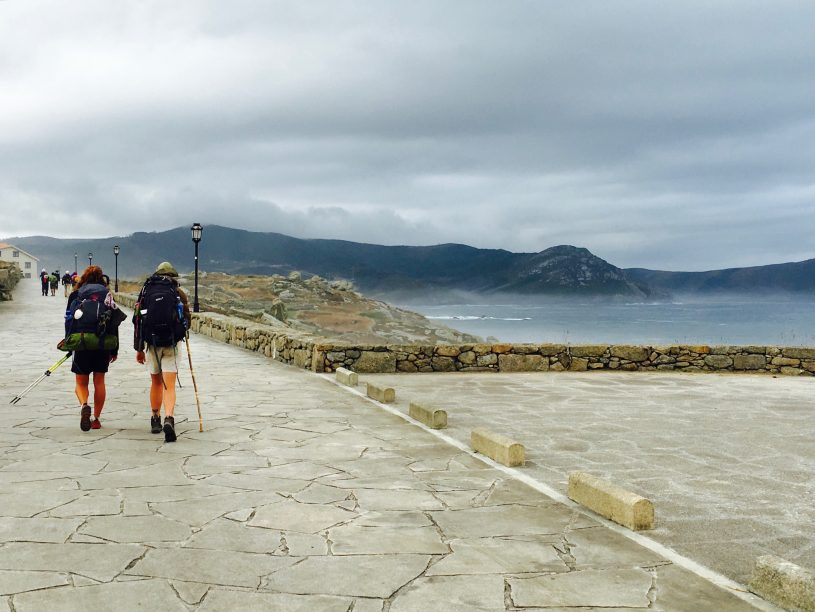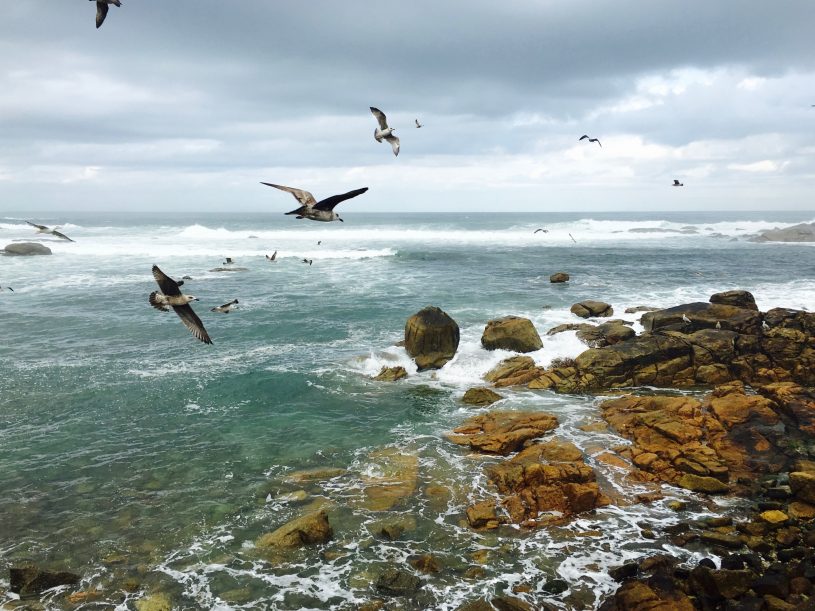Pilgrimage: A Path of Practice for the New Activism
It was a long day on El Camino, The Way of Saint James, the famed thousand-year old pilgrimage route across the north of Spain. I set out at daybreak and now the sun was setting low on the dusty hills. As I rounded the final bend of the day, my backpack and boots heavy, feeling leaden, a local man walking his dog greeted me from the far side of the field, ‘Ultreia!’ he said, ‘Ultreia!’1
Pilgrimage is a universal phenomenon. It describes a journey to a sacred place in search of meaning and purpose, an inner and outer journey. It is a metaphor for the physical, spiritual, and emotional effort to reach the pilgrim’s goal and points to the human spiritual journey of life, full of sacrifice, regrets, joys, and mystery.
Pilgrimage, a special kind of travel, is a physical, geographical, and spiritual effort. It is the individual and collective search for the sacred, where spiritual experience and geography converge. The pilgrimage road, the path, the physical journey, is the outward manifestation and, for me, is laden with abundant lessons about life and about activism.

As an international retreat leader, leadership coach, and writer, I am curious about ways to access the soul, the inner human journey. I am curious about how pilgrimage supports ‘inner work,’ ‘authentic selfhood,’ true self, true voice, and authentic service in the world. How does pilgrimage cultivate community and relationship while also nurturing the individual, our community, society, and our planet?
To be a pilgrim is to be committed to a vision that is truly your own, to a vision that may not necessarily be defined by external values of society but by a deep and tenacious, close-to-the-core belief in yourself and in living your values in the world, to make a better world possible. This requires a dynamic vision that springs from within and a willingness to pursue Truth. It was Krishnamurti who said that “Truth is a pathless land.” The pilgrim is in pursuit of the path of inner truth borne out of a willingness to open to whatever is happening now, to practice the Art of Letting Go of Expectations, and to Surrender to Now.
Recently, I returned from leading the pilgrimage El Camino de Santiago, Spain. We began our walking pilgrimage in Santiago de Compostela, Spain, a beautiful and lively medieval town famously known to be the endpoint for many of the 39 Camino routes across the Iberian Peninsula. Our pilgrimage destination was the small fishing village of Finisterre, the ‘End of the Earth.’ It is said that in walking El Camino, the road itself is the best teacher. For me, the road offered many lessons in inner activism, in understanding authentic selfhood.

During my high-pressure career as a lawyer-lobbyist, I believed that effective activism was about a set of competencies that included technical skill, expertise, power, status, and control. I believed that activism was largely about positional authority and superior technical competency. The person at the top of the organizational chart was the leader. I played by these rules, believing that if I had the right educational degrees, the right skill set, and right experience, I would be a successful leader and activist.
Today, working primarily with leaders and activists, I’ve learned a new language of activism. Activism requires self-awareness, emotional intelligence, integrity, and trustworthiness. In the face of complexity, ambiguity, and uncertainty, we are called to be adaptable, to embrace paradox, and to hold unsettled tensions.
During this walking pilgrimage, I felt called not to be the person up front, leading the group, but instead to position myself sometimes in the front, other times in the middle, and often dead last. I perceived that my role wasn’t to prove that I could walk fast, but to support others in their pilgrimage journey. Walking El Camino, the path itself, taught me that activism is about the relationships that I cultivate with each person; how I express care, concern, and kindness; and how I offer support to others and for myself. I realized that the support I could offer the fast walkers might be different from the support that I offer the slow walkers. The Way of Saint James helped me to attune to others and to trust my brief moments of clarity and my own intuition.
I realized that activism includes waiting patiently for an opportunity to serve each pilgrim. It is not necessarily about ideology or about position. It is primarily about knowing the needs of others and meeting those needs. It is more about caring for others than about serving self. It is cultivating keen awareness of the environment and conscious relationships.
I noticed that leading this way gave others permission to do the same. My individual activism became our collective action as we each took turns walking in the front, the middle, and the rear. What emerged was a genuine sense of care and compassion, a vulnerability to accept not being in the lead, and the willingness to support each other unconditionally. I learned about the inner journey of activism by welcoming others and making space for everyone to become an integral part of the journey. Everyone mattered. Ultimately, we collectively created a wholehearted learning community on the pilgrim’s path.
1 ‘Ultreia’ or ‘Ultreya’ means onward with a sense of joy— in common use by pilgrims to greet and to encourage one another along The Way of Saint James.

“I perceived that my role wasn’t to prove that I could walk fast, but to support others in their pilgrimage journey.” Lovely, multilayered insight.
Thank you!